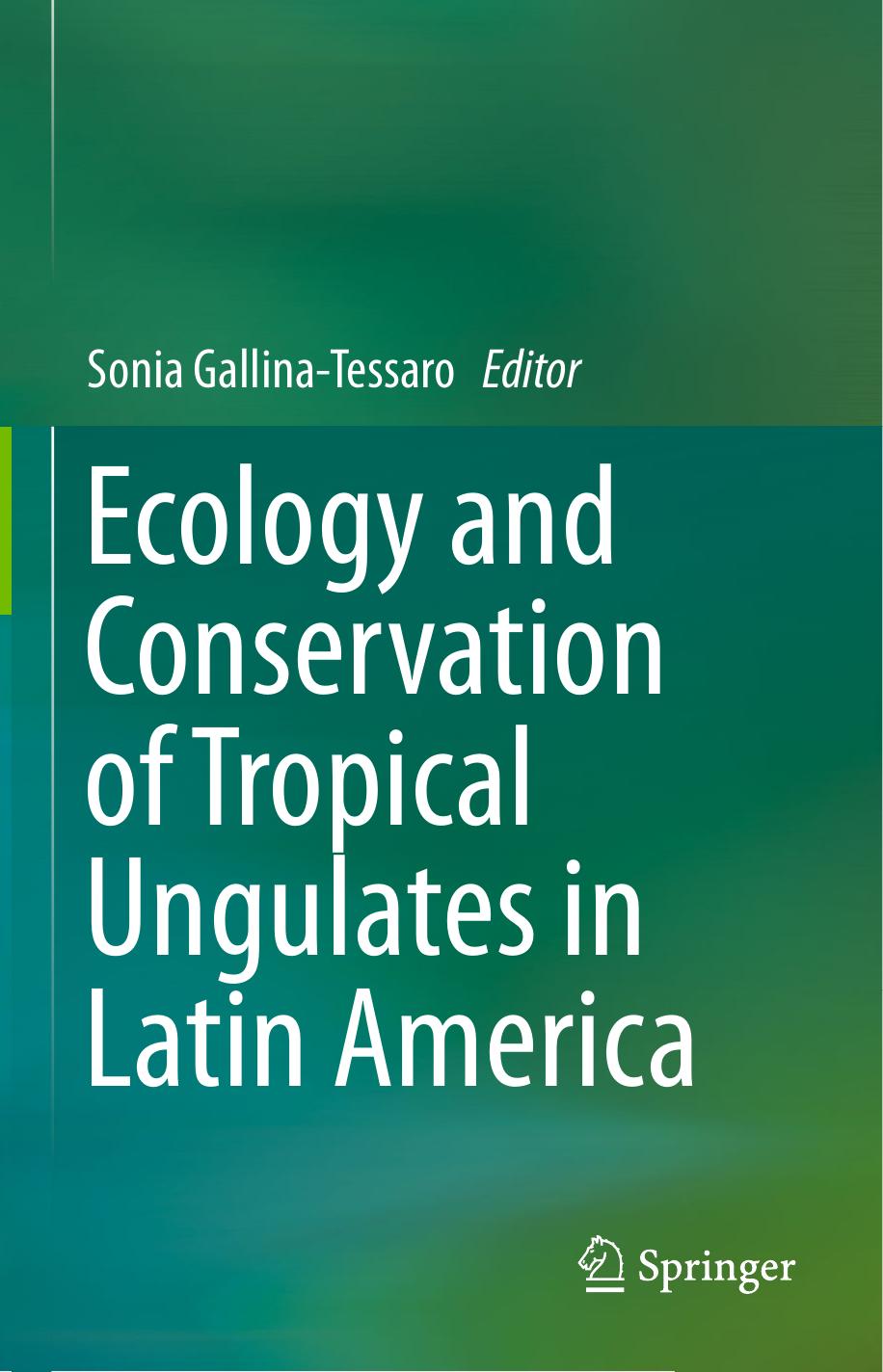Ecology and Conservation of Tropical Ungulates in Latin America by Sonia Gallina-Tessaro

Author:Sonia Gallina-Tessaro
Language: eng
Format: epub, pdf
ISBN: 9783030288686
Publisher: Springer International Publishing
11.6.3 Population Dynamics
Home Range. In the Chimborazo Wildlife Reserve, it is estimated that the groups occupy an area of no more than 40 ha, but the size may be smaller depending on the size of the family group, the availability and quality of the food, and water sources (Rodríguez-González and Morales 2017).
Density Estimates. No information is available.
Population. In Ecuador, vicuñas have been introduced at three different times. In 1988, 200 individuals from Chile and Peru were brought; and in 1993, 77 individuals from Bolivia, all were located within the Chimborazo Wildlife Reserve (MAE 2013). A fourth shipment in 1999 included the entry of 100 vicuñas that were located in San José de Tipín (MAE 2013). At the beginning there was a high mortality of vicuñas (between 40% and 50%) (MAE 2013; Garrido 2016).
The population of vicuñas in Ecuador is estimated at 7185 individuals, distributed 38% in the province of Chimborazo, 42% in Tungurahua, and 20% in Bolívar (MAE 2016). The annual growth rate of the vicuña is 5.5%, that is approximately 176 new vicuñas every year (MAE 2016).
Population Structure. The vicuña is a social animal (Tirira 2017). In the Chimborazo Wildlife Reserve three population structures have been observed (Rodríguez-González and Morales 2017): family groups, groups of single males, and solitary individuals.
Family groups are composed of an adult male, a harem of several adult females (up to five) and their offspring younger than 1 year; the family group is stable and remains united not only during the breeding season; adult males usually maintain the family group for at least 6 years (Rodríguez-González and Morales 2017).
The groups of single males are composed of young males over 1 year old, expelled from their groups, and old adult males; these groups can be formed by a few (less than 5) up to a 100 individuals, but on average around 20; they are unstable groups that vary in their composition and number permanently (Albán 2009; Rodríguez-González and Morales 2017).
Solitary individuals are adult males who have decided not to join a group; this condition is the least frequent in the Chimborazo Wildlife Reserve (Albán 2009).
Mortality Factors. Puma (Puma concolor) is considered the main predator of the vicuña (Yensen and Tarifa 1993; Pacheco et al. 2004); however, this species has not been registered in the Chimborazo Wildlife Reserve for at least 50 years (Tirira 2019). Actually, main predator of the vicuña is considered to be the culpeo (Pseudalopex culpaeus), especially attacking young individuals (Albán 2009; MAE 2013). Feral dogs are another cause of mortality of young and solitary vicuñas; it has been reported that attacks occur mostly at night (MAE 2013). There is also a report of the attack of a group of domestic dogs on a newborn vicuña in the province of Bolívar (Albán 2009).
Another cause of mortality are run-overs on the main roads surrounding the Chimborazo Wildlife Reserve, although there are no data of this threat (Rodríguez-González and Morales 2017).
In 2000 the death of 29 vicuñas was recorded due to the consumption of grass contaminated
Download
Ecology and Conservation of Tropical Ungulates in Latin America by Sonia Gallina-Tessaro.pdf
This site does not store any files on its server. We only index and link to content provided by other sites. Please contact the content providers to delete copyright contents if any and email us, we'll remove relevant links or contents immediately.
| Amphibians | Animal Behavior & Communication |
| Animal Psychology | Ichthyology |
| Invertebrates | Mammals |
| Ornithology | Primatology |
| Reptiles |
Sapiens: A Brief History of Humankind by Yuval Noah Harari(14258)
The Tidewater Tales by John Barth(12610)
Mastermind: How to Think Like Sherlock Holmes by Maria Konnikova(7236)
Do No Harm Stories of Life, Death and Brain Surgery by Henry Marsh(6891)
The Thirst by Nesbo Jo(6838)
Why We Sleep: Unlocking the Power of Sleep and Dreams by Matthew Walker(6620)
Life 3.0: Being Human in the Age of Artificial Intelligence by Tegmark Max(5480)
Sapiens by Yuval Noah Harari(5298)
The Longevity Diet by Valter Longo(5021)
The Body: A Guide for Occupants by Bill Bryson(4979)
The Rules Do Not Apply by Ariel Levy(4870)
The Immortal Life of Henrietta Lacks by Rebecca Skloot(4529)
Animal Frequency by Melissa Alvarez(4400)
Why We Sleep by Matthew Walker(4366)
The Hacking of the American Mind by Robert H. Lustig(4319)
Yoga Anatomy by Kaminoff Leslie(4310)
All Creatures Great and Small by James Herriot(4239)
Double Down (Diary of a Wimpy Kid Book 11) by Jeff Kinney(4210)
Embedded Programming with Modern C++ Cookbook by Igor Viarheichyk(4112)
